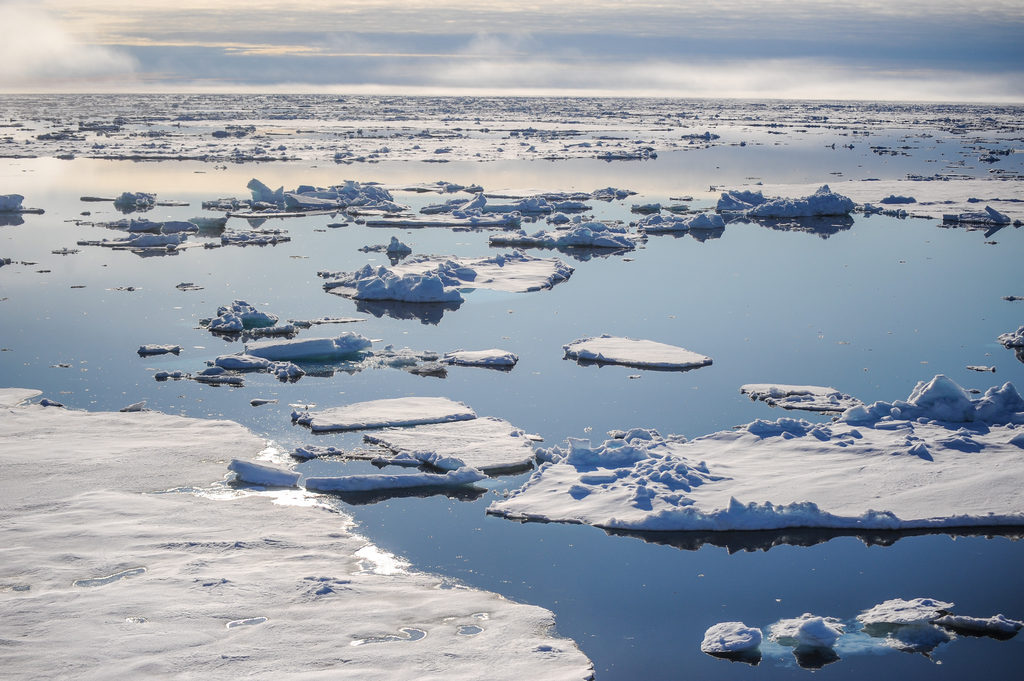News review of the events on the NSR
#1 November 2019
1. Arctic ice melts more intensively in summer
Russian large-scale expedition “Transarktika-2019” finished. According to its results, Russian scientists note a record reduction of ice cover in the Arctic. Data on ice fields were obtained during the work of research vessel “Akademik Treshnikov”.
Work was carried out at the border of seasons when the ice began to break down. Research has provided fundamentally new information on how ice is formed and how it is destroyed.
According to the results of the expedition, the first scientific results of the vessel’s work confirm that the reduction of area and thickness of ice cover; an increase in the amount of heat transferred by the North Atlantic current to the Arctic basin; activation of cyclonic activity – lead to the reorganization of the structure of water masses, the transformation of atmospheric and oceanic patterns circulation, changes in the intensity of hydrochemical and hydrobiological processes.
The data obtained is important for navigation along the Northern Sea Route. Experts note that the changing of ice regime of the Arctic seas will affect the climate of the entire planet, and the conditions for navigation along the Northern Sea Route will also change. An increase in the duration of the ice-free season is projected.
2. Russian Arctic will receive a special economic regime
The Arctic zone of Russia will receive a special economic regime with a set of tax and non-tax preferences. It will start operating in 2020 and subsequently it will develop and change depending on the needs of investors.
For example, Russia intends to increase geological exploration in the Arctic. A program of geological exploration of the territory will be written for this. It will provide mechanisms for the development of competition and technology. In order to do this, officials intend to expand the access of private companies to the shelf. Specifically, for example, an investment tax deduction mechanism in the amount of 50% of expenses for the search, assessment and exploration of offshore fields is being worked out.
At the moment, the government of the Russian Federation has agreed on the principles of state support for Arctic projects. The minimum amount of investments, that are planned to receive state support, may be 10 million rubles.
3. Gazprom Neft icebreakers pass field tests
The latest diesel icebreakers “Alexander Sannikov” and “Andrey Vilkitskiy” received an official decision on passing field ice tests in the Ob Bay.
The heavy-duty twin vessels operating in the area of “Arctic Gate” oil terminal have been tested in the natural environment at the “ice training ground” near Mys Trekhbugornyy. Tests of new vessels are carried out in a traditional way. “Sannikov” and “Vilkitsky” overcame even first-year ice, brush ice, and also demonstrated maneuverability in hummocks and in solid ice.
According to the results of two days, experts estimated the icebreaking capability of vessels as high.
Icebreakers were built to ensure year-round oil supplies from Novoportovskoye field to the world market. The specific shape of the hull allows vessels to cut and crush ice, which distinguishes them from other icebreakers of this class. “Alexander Sannikov” and “Andrey Vilkitskiy” carry out icebreaking assistance for tankers, provide mooring and loading operations, towing ships, firefighting, and assistance in carrying out rescue operations.
4. Arctic will test icebreaker “Victor Chernomyrdin”
“Admiralty Shipyards” company of the United Shipbuilding Corporation of Russia completed the marine stage of builder’s trials of diesel-electric icebreaker “Viktor Chernomyrdin”.
The next stage is ice trials in the Arctic seas. The ship will pass them after the transfer to the customer, since the ice field of the required thickness and strength will be established only in March-April 2020.
Now the icebreaker has returned to the shipyard for inspection and finishing work. All technical characteristics of the icebreaker during the tests are confirmed. Systems of manual and automatic control of the vessel, navigation and communication systems, as well as radar stations worked in the normal mode. The helicopter made day and night take-offs and landings on the bow and stern platforms of the icebreaker, the helicopter’s communication with the ship was stable.
“Victor Chernomyrdin” is one of the most powerful diesel-electric icebreakers in the world. A vessel with deadweight of 22.3 thousand tons is capable of speeds of about 17 knots in clean water. It can pass ice up to 3 m thick in a solid field with a snow cover of 20 centimeters at a speed of 2 knots in forward and reverse. The crew is 38 people. Autonomy – 61 days. The icebreaker is designed for icebreaking assistance and towing vessels, capable of transporting and supplying scientific expeditions in the Arctic and Antarctic. It can perform the functions of a fire-fighting ship.

